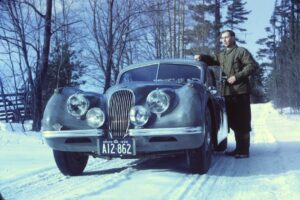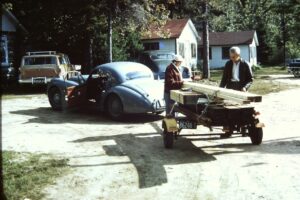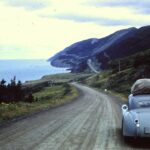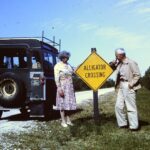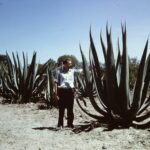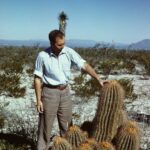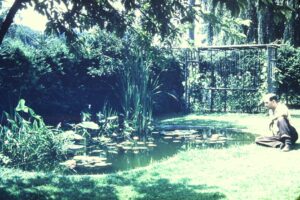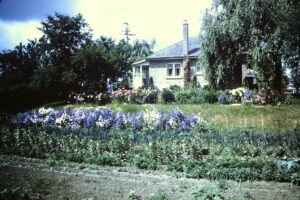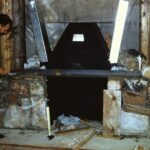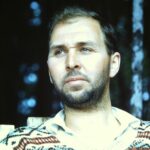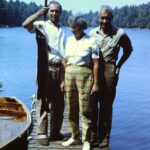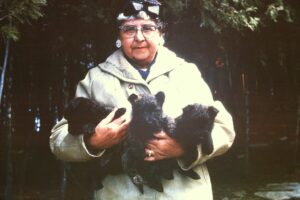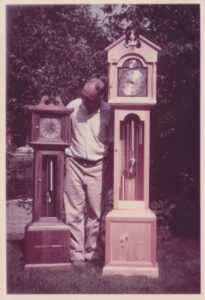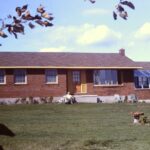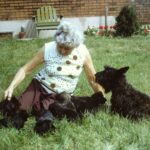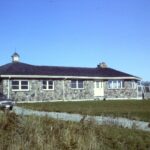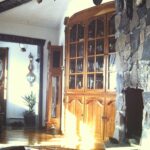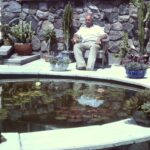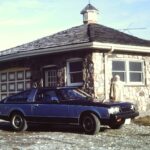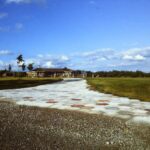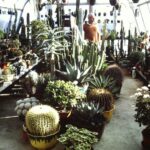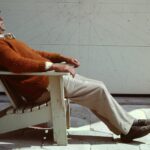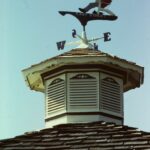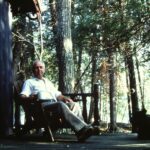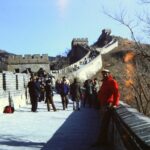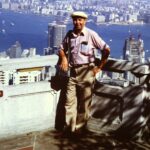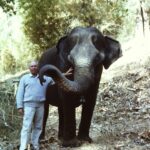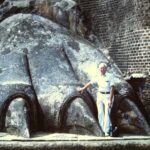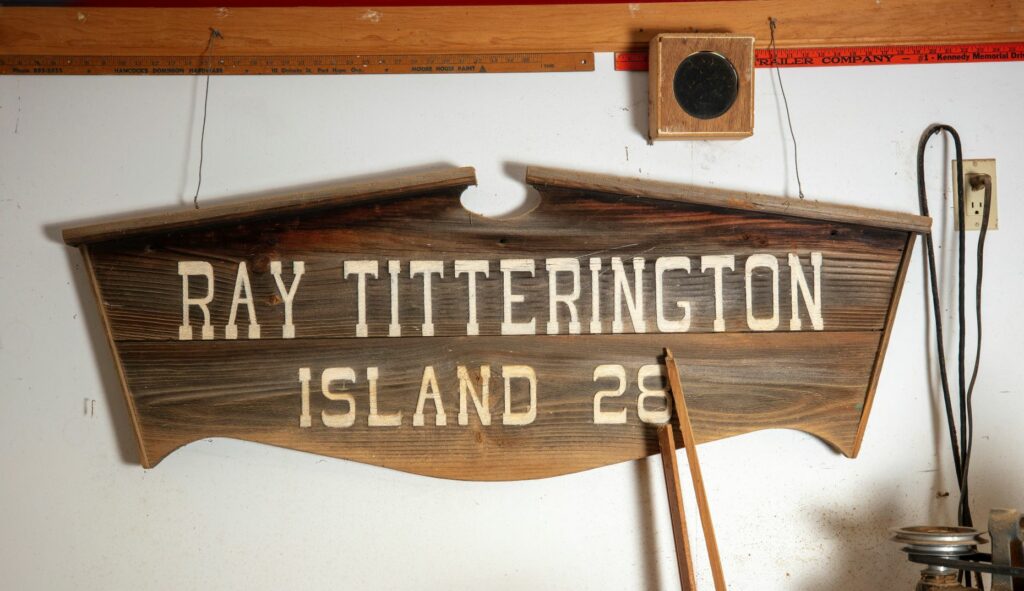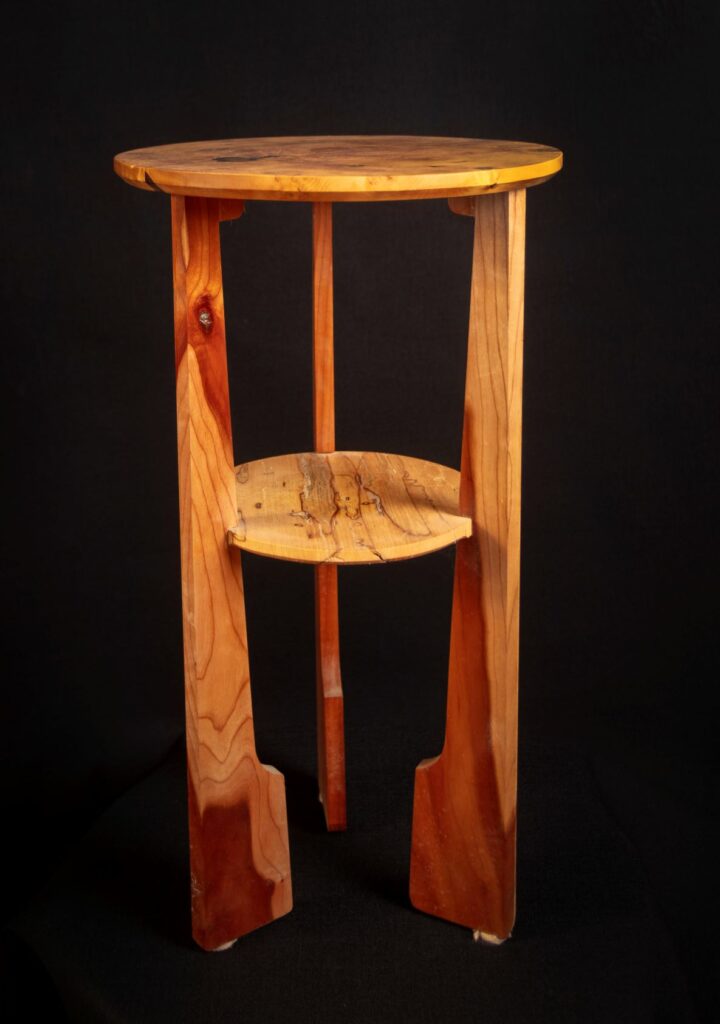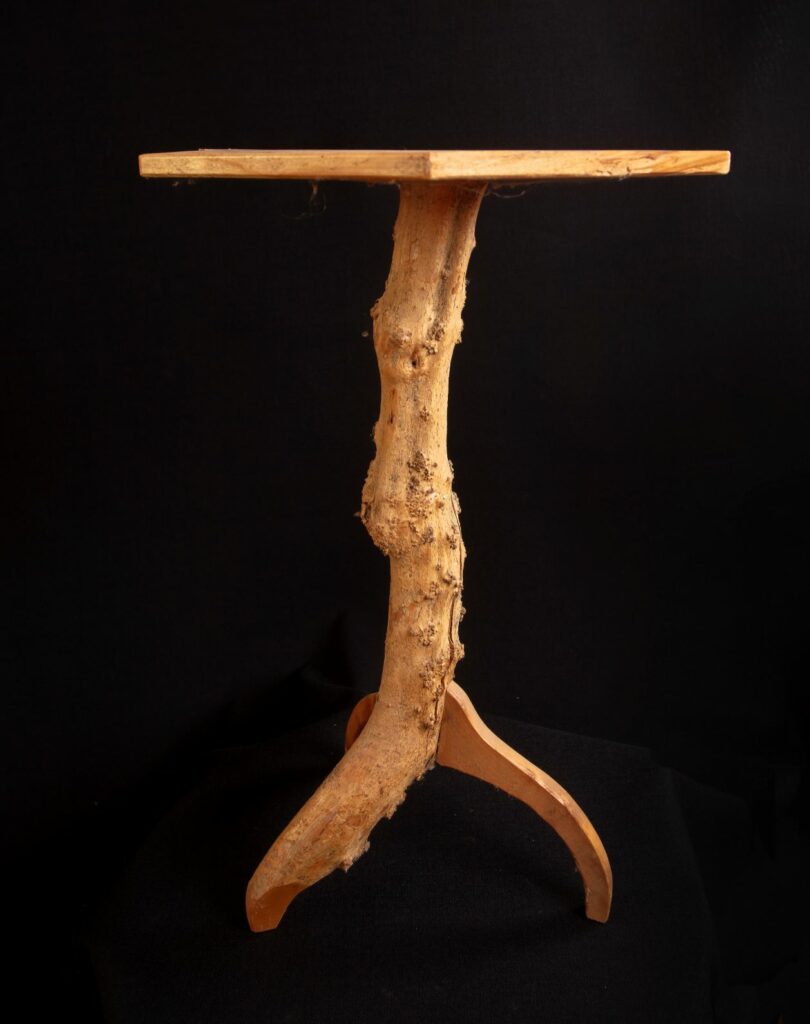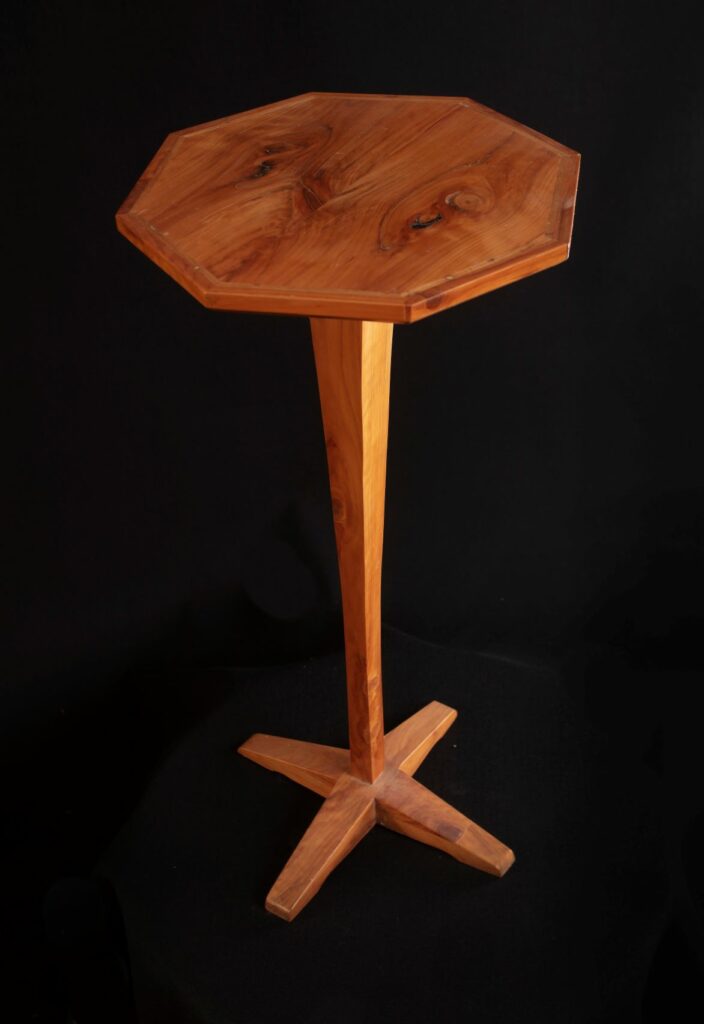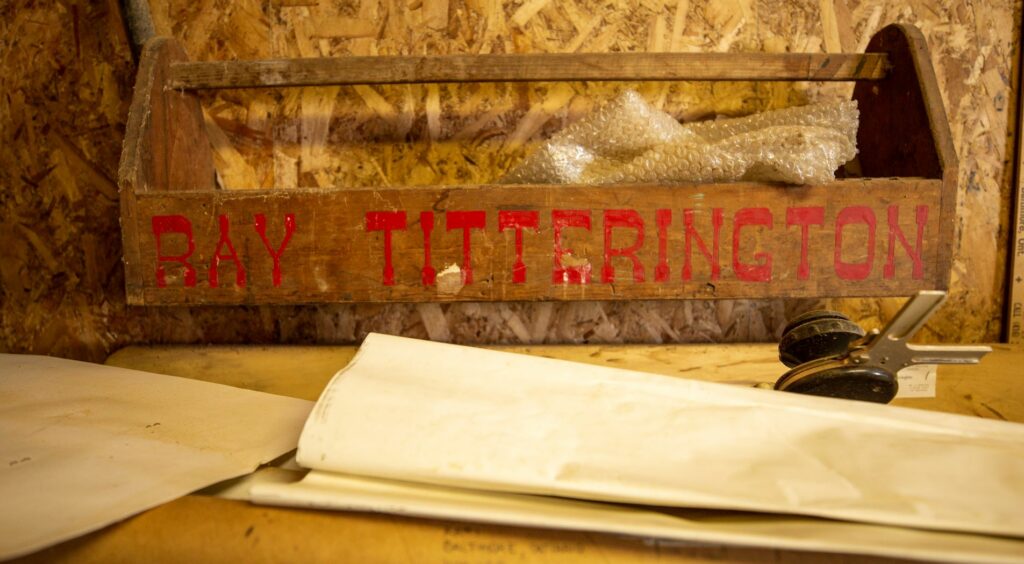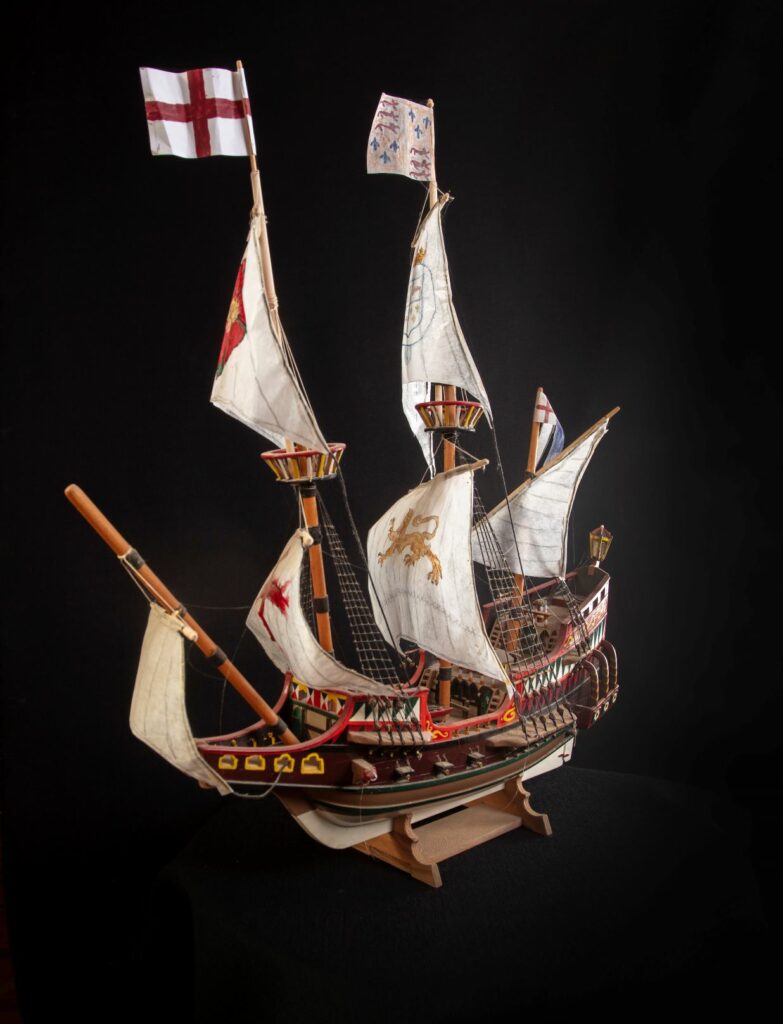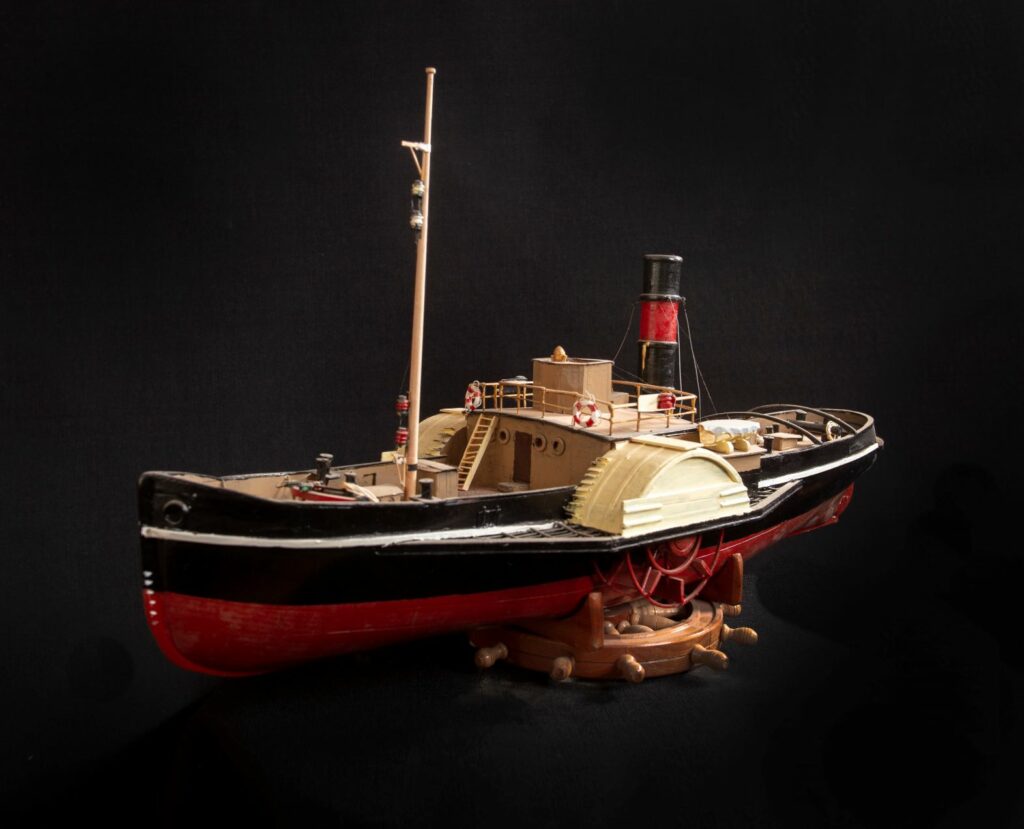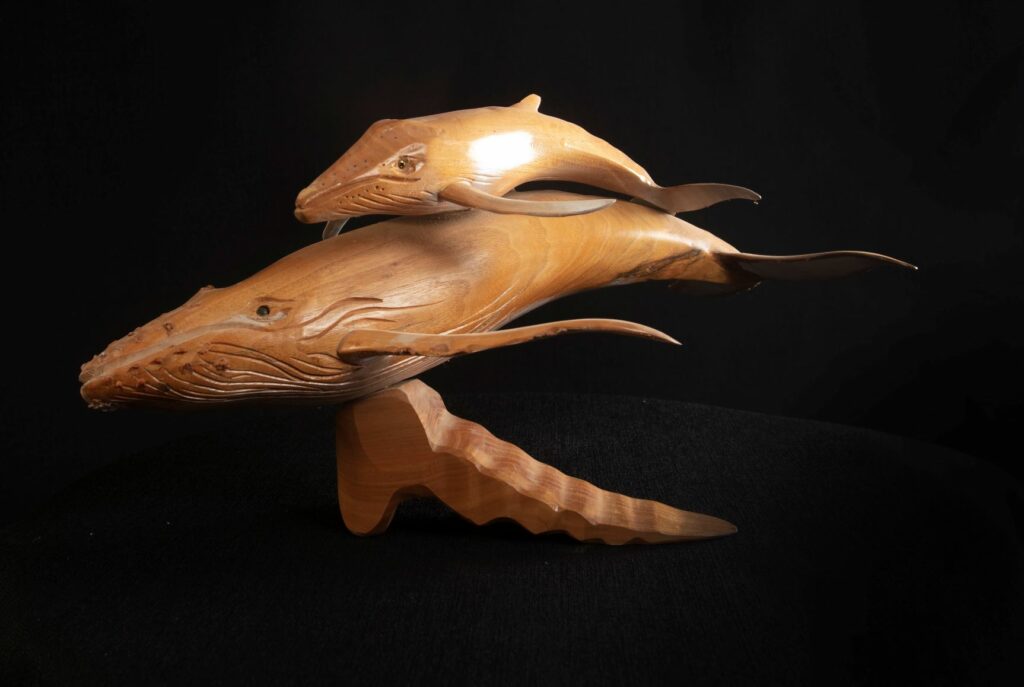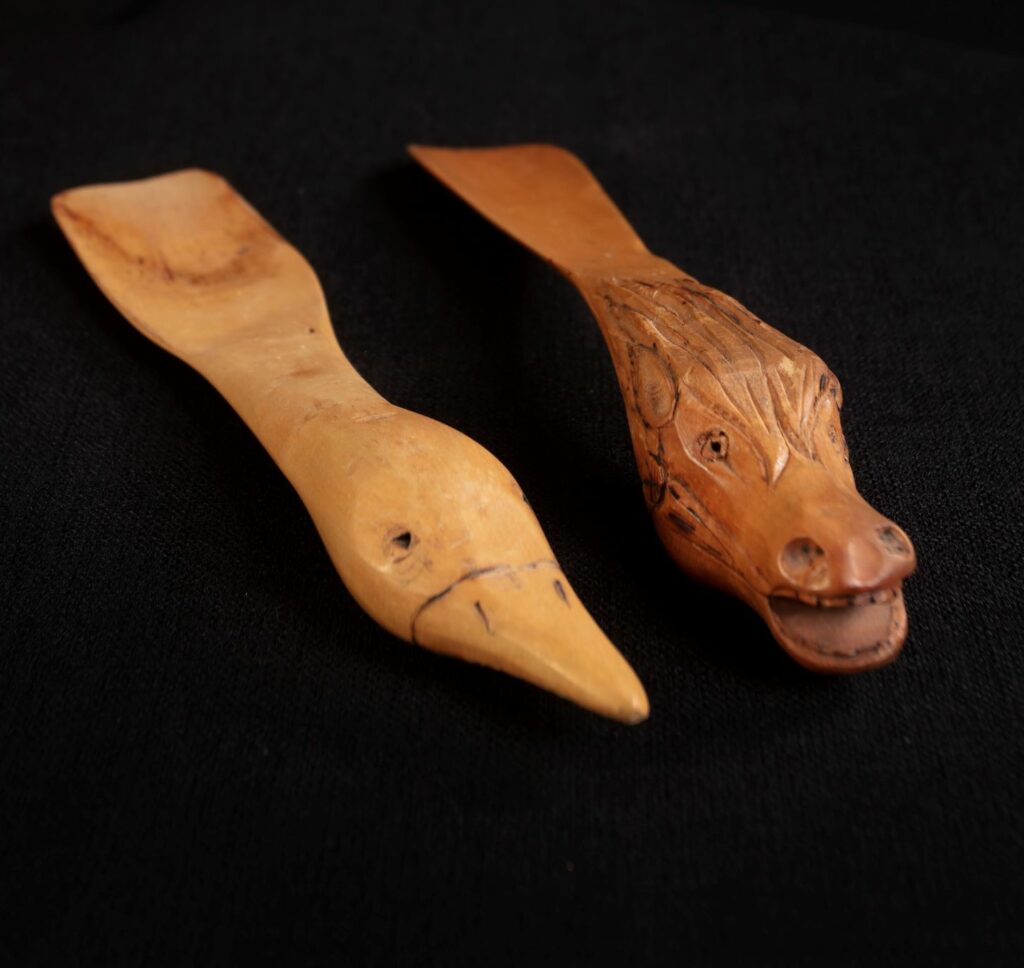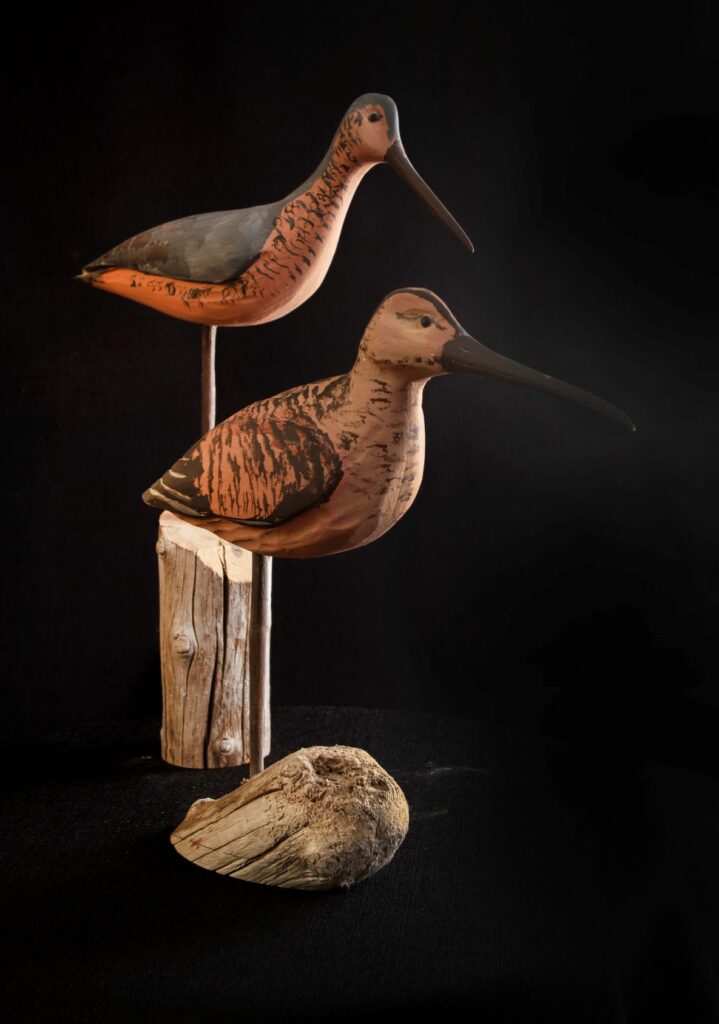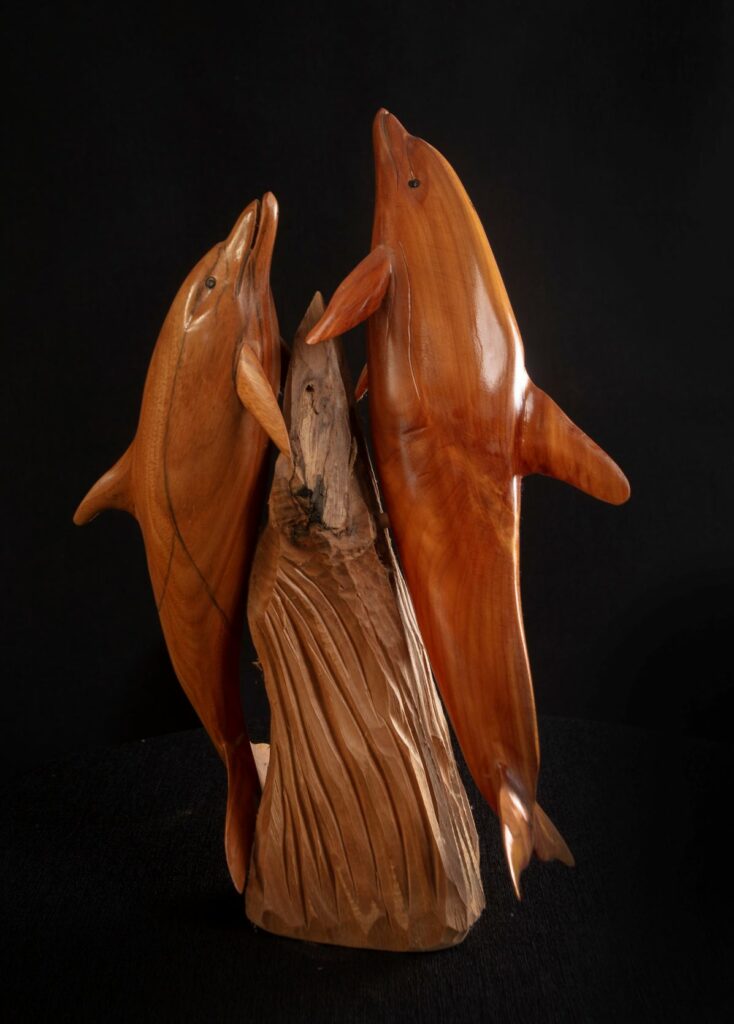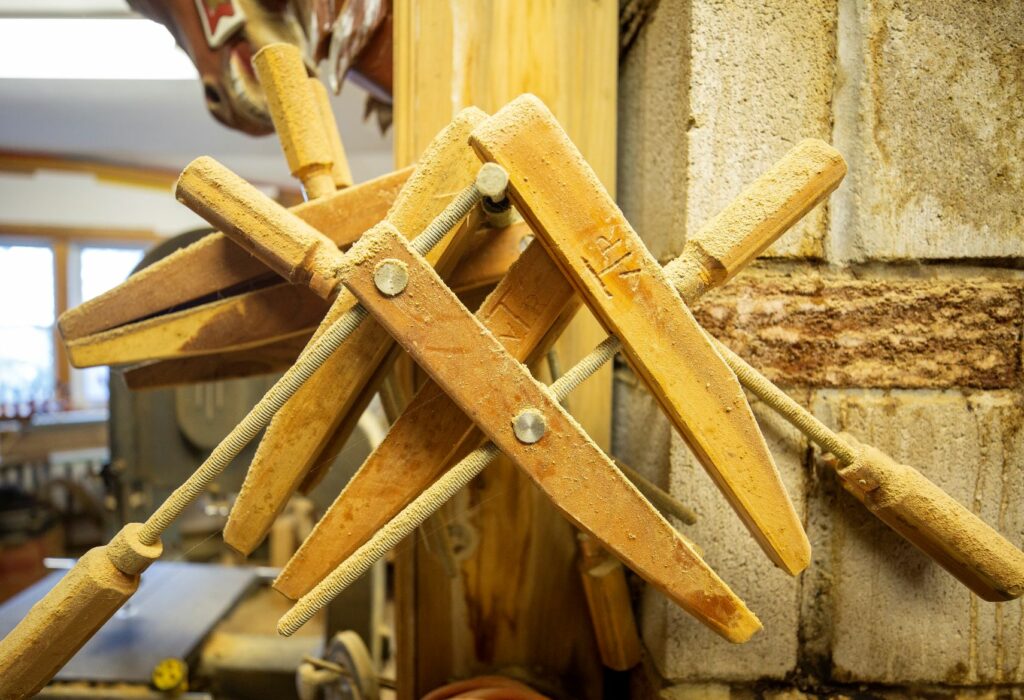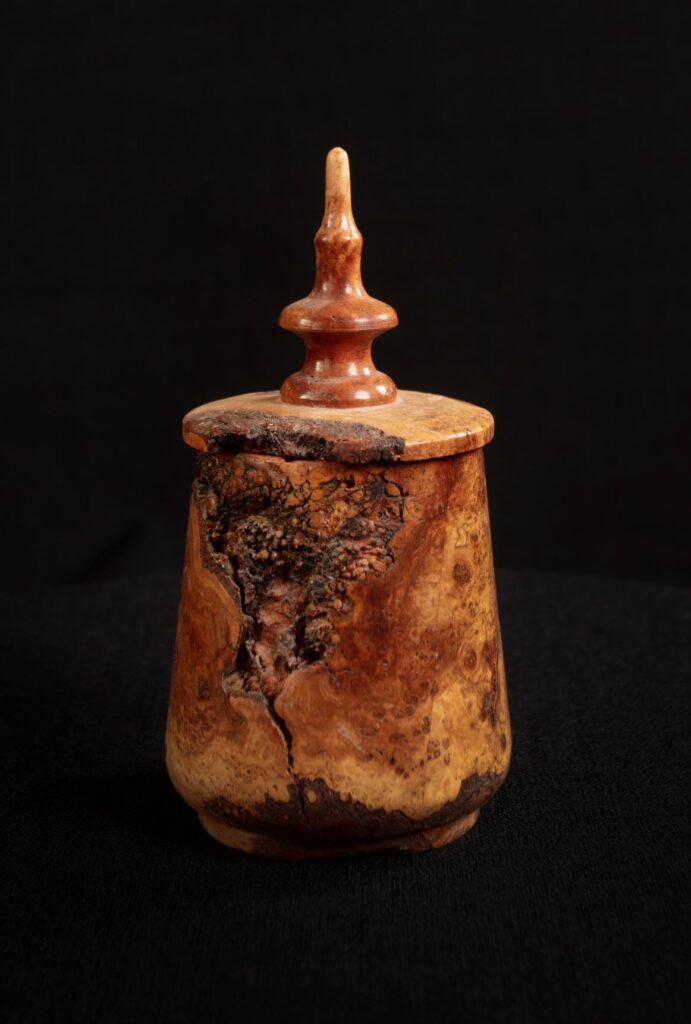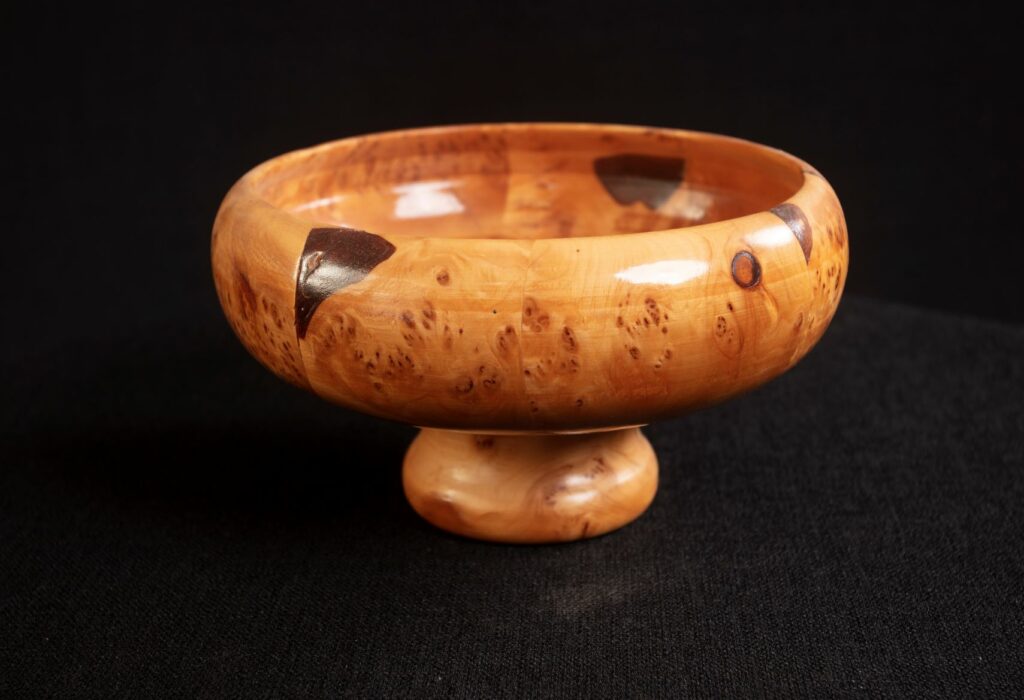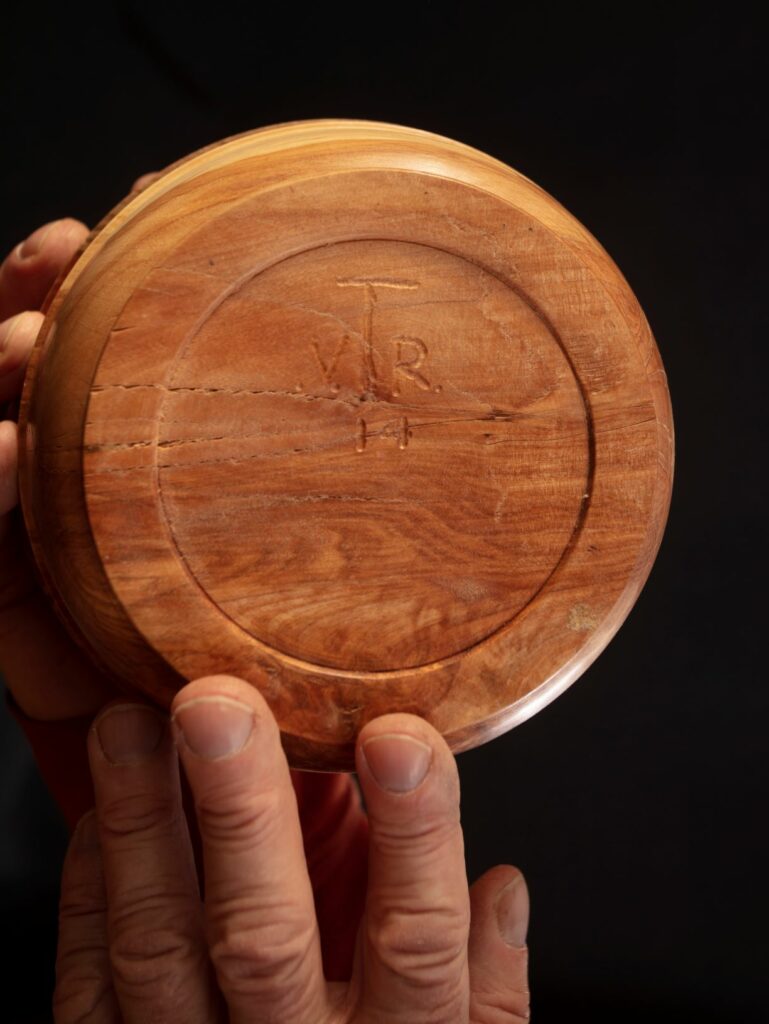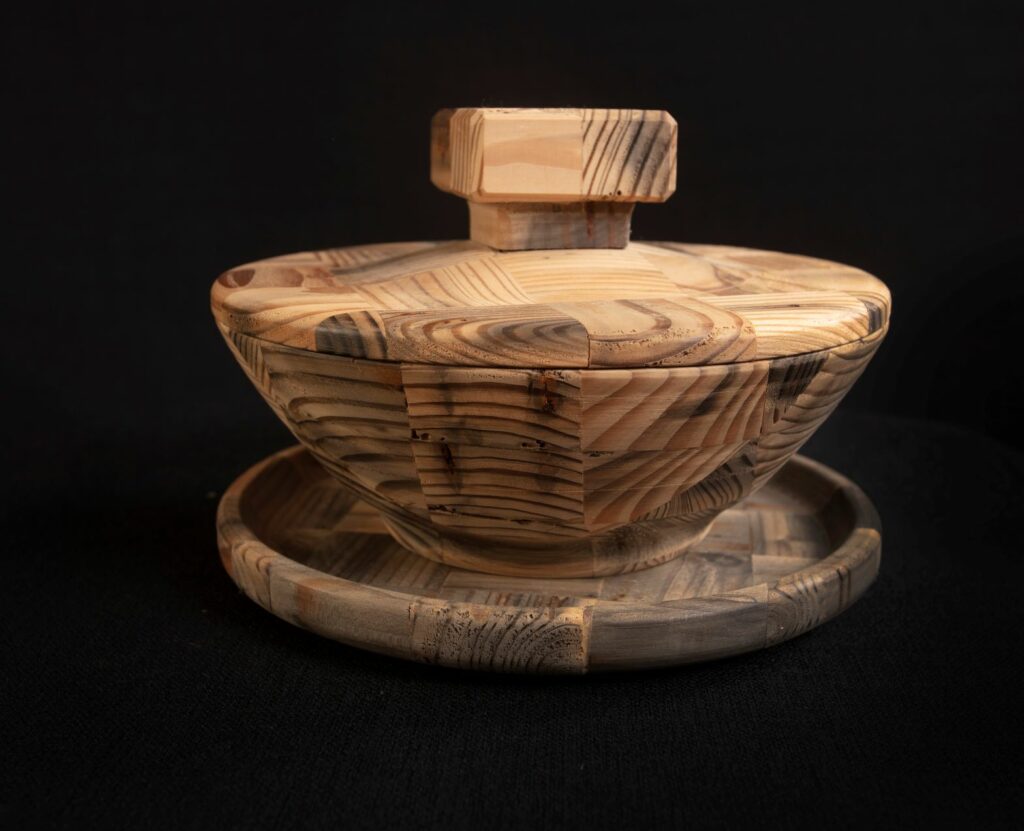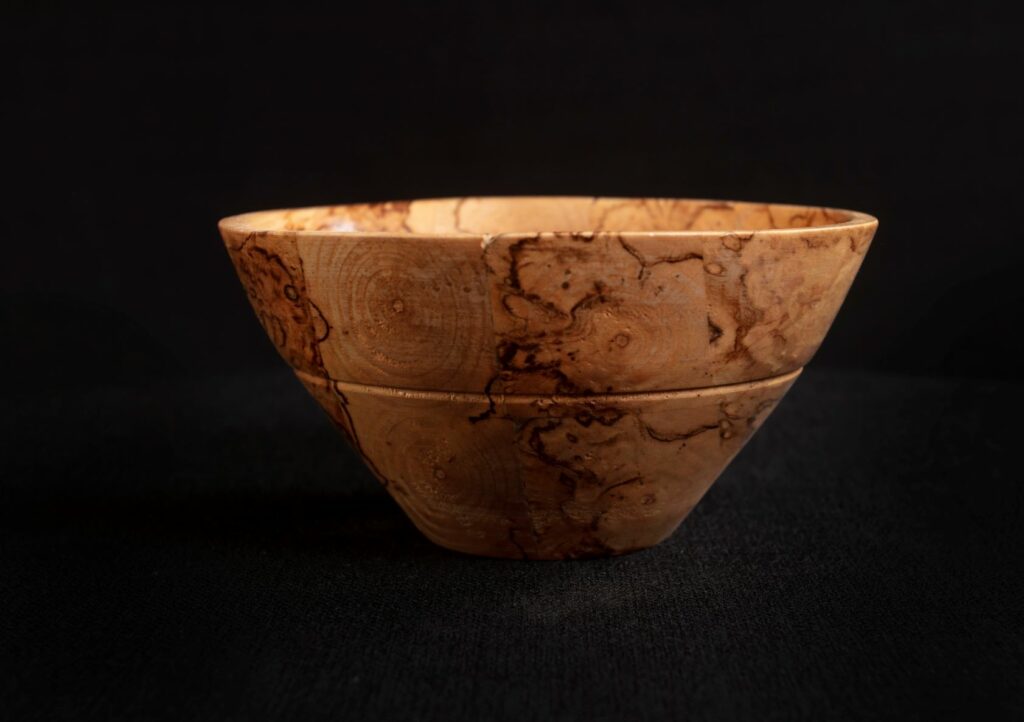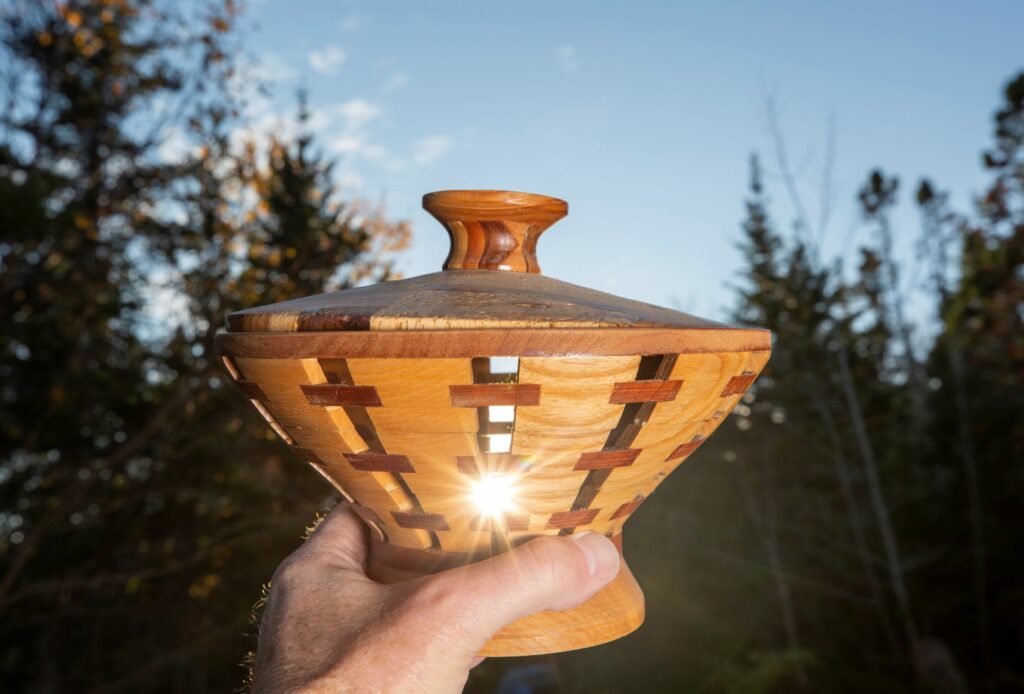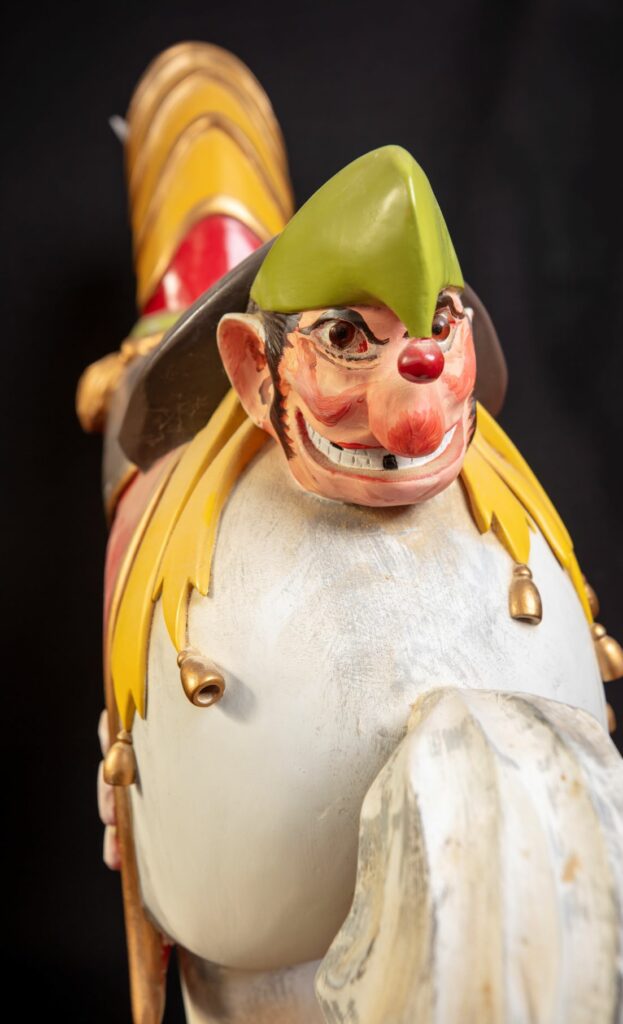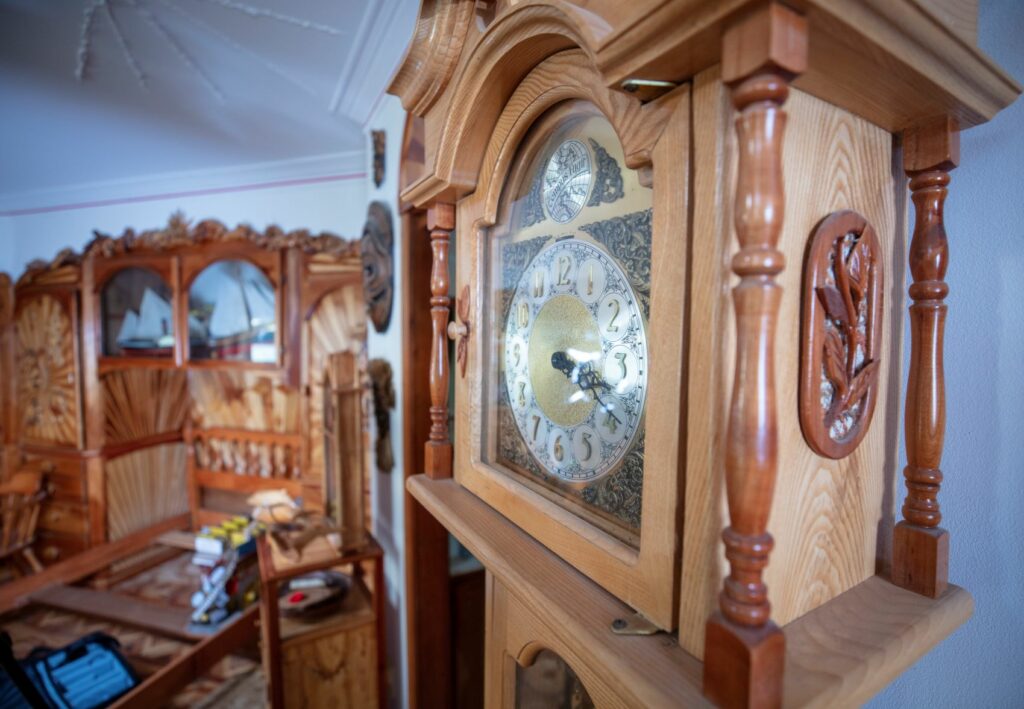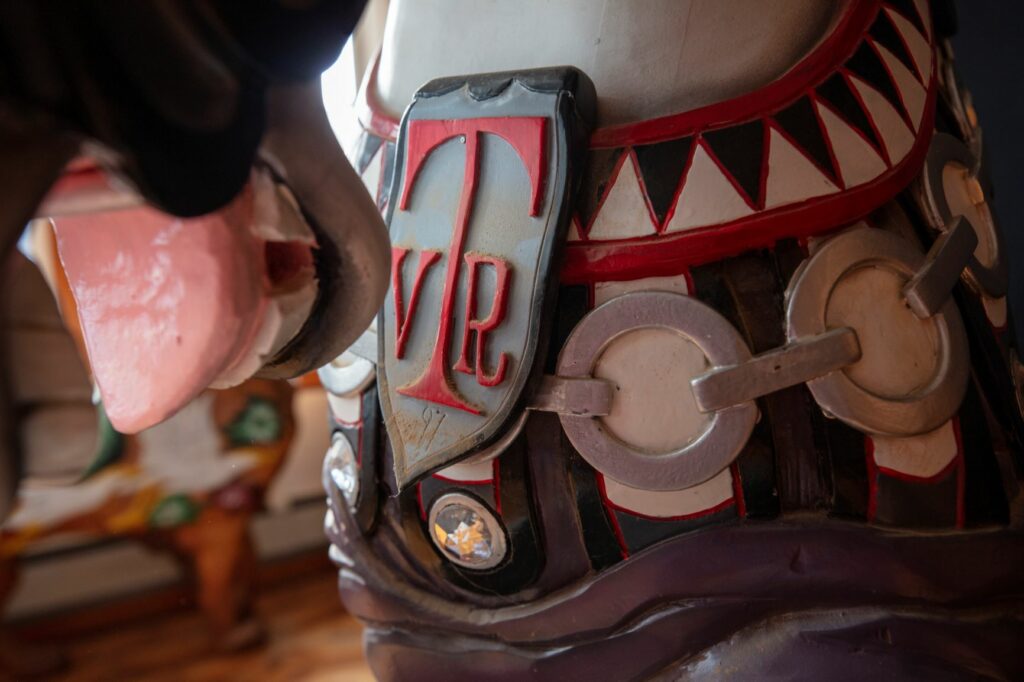Victor “Ray” Titterington, Part 2: Imagination Embraces the World
23 May 2021
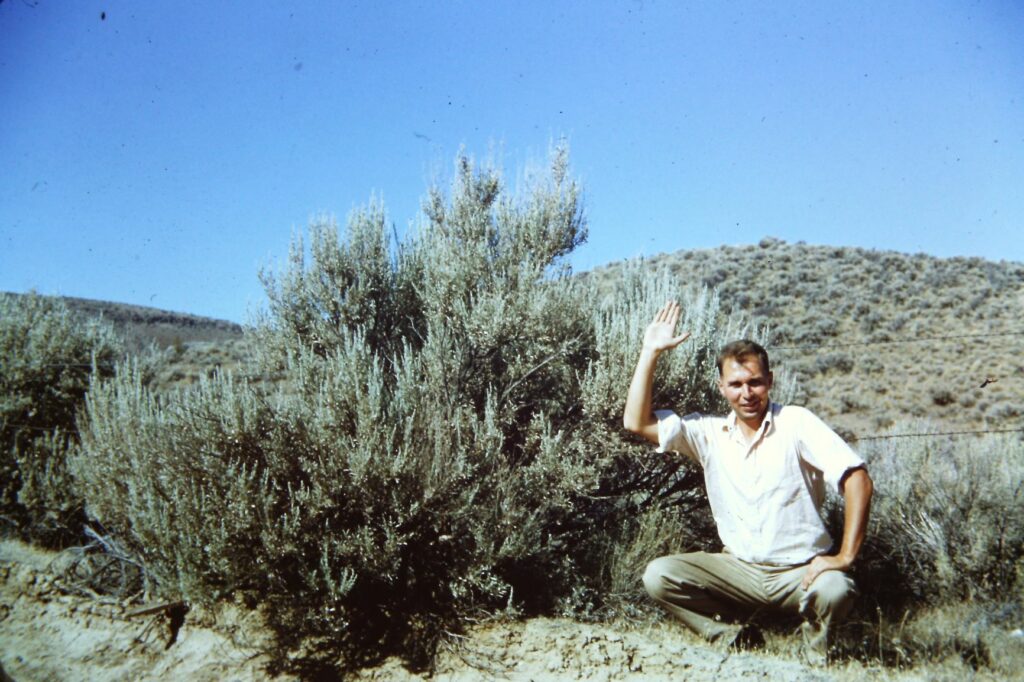
This is the second in a three part series about the life and times of Ray Titterington who, in January 2020, bequeathed his entire estate to the Nova Scotia Nature Trust. People from all over the world were captivated by the photos of his fanciful carvings, home, and greenhouse full of cacti. Many wondered about Ray’s past and what had inspired him. Over the past year, two volunteers have gathered the story of Ray’s life, and the gift that will build a wonderful natural legacy. Read Part 1: A Life Well Lived, of Ray’s story, and stay tuned for Part 3.
The Young Apprentice and Entrepreneur: 1947-1966 (19-38 years old)
Ray Titterington’s involvement at the Canadian General Electric Company during his high school years helped him realize that he wanted a life in the trades, and to make things with his hands for a living. With that in mind, upon completion of High School, Ray apprenticed as a tool and die maker (a machinist) at Branson Tool in Peterborough.
Following his training in 1950, he headed off to Toronto to work his trade. Jobs were easy to get as the economy was flourishing, so Ray worked in many different companies to gain experience, “become a better tradesman”, and keep his interest refreshed. Over the span of ten years, Ray held twelve jobs.
Ray may have lived on his own in Toronto while learning his trade and roving from company to company, but when he moved back to the Port Coburg/Peterborough area, he moved back in with his parents Leo and Florie. Living as a team of three proved to be very economical as well. Ray and his father would develop and build on different properties the family bought, while his mother would run the house, and cook the meals to keep the team fueled.
By the early 1950’s, we have the first evidence of another of Ray’s lifelong passions – sports cars! Ray and his friends used to visit local car races in the early 1950’s at Edenvale aerodrome near Barrie, Ontario. By 1954, there are pictures of Ray as a member of the Peterborough Motor Sport Club.
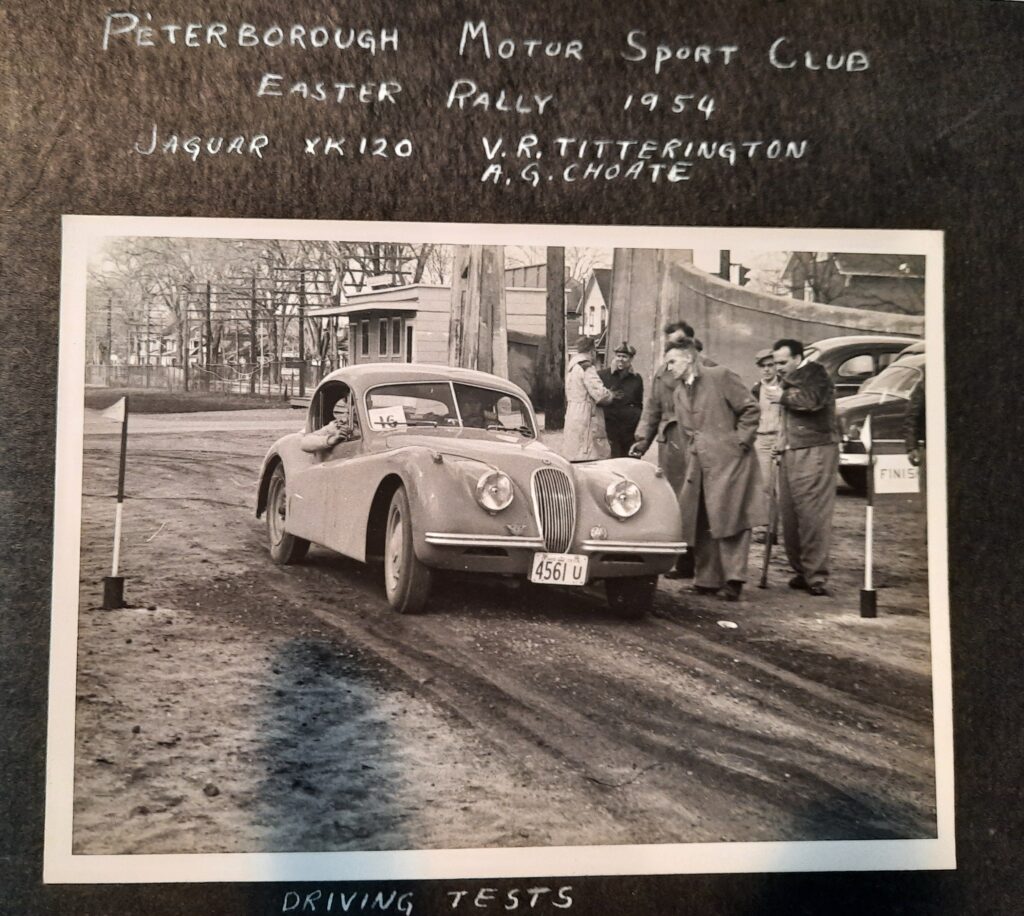
His love of racing wasn’t something he enjoyed only in Canada though. We also know that in 1952, Ray took a six month leave of absence from the Canadian General Electric Company to travel through England and Europe. While there, he attended car races at Turnberry Scotland, as well as motorbike races on the Isle of Man.
His sports car passion extended well beyond just watching races. He wanted to own one. As far back as 1950, there are pictures of Ray in various sports cars, the first of which was an MG Convertible. By 1953 he had moved on to a second-hand Jaguar XK120 (from a series that ran from 1948-1954). For a man who loved cars, he certainly did not baby them though. There are numerous pictures of camping gear strapped to the roof of the Jaguar for one of his many trips with his parents. There are also pictures of the Jaguar pulling a utility trailer for hauling lumber and wooden boats, and much more. He would run this Jaguar for the next two decades. One really fun tidbit that we learned, was that Ray researched buying an Aston Martin DB2 in both 1953 and 1954. This car is famous for being James Bond’s car of choice!
Every year, Ray travelled not only with his mother and father, but also on his own. With his trusty used Jaguar two door coupe, he headed down into the United States Midwest and through Texas to visit Mexico. He loved to drive, and when his parents were with him, there is no doubt that his father and mother were quite happy for him to be their chauffeur. As a budding photographer, Ray documented his trips carefully, and one can see that he loved to capture the local flora (like flowers and cacti), animals, history, people and geography. Photography was expensive, so Ray seemed to be judicious with the pictures he took. Although he may have been a talented photographer himself, the photos taken of him by friends or someone passing by were unfortunately often fuzzy and out of focus. As a means to address that, Ray embraced technology and advances associated with photography, and mastered the art of using a timer once one was available. This allowed him to be more in control of the final product.
Ray travelled to Florida almost every winter with Leo and Florie to escape the snow. They would all pile into his two door Jaguar, or his Dad’s old Land Rover if they were taking the dogs. Camping while travelling was nothing new for them, as friends of Ray say that Leo often took the family camping in a van before they converted to using a car. As evidenced by Ray’s photos, many of their trips to Florida included a visit to Disney World. Could this be where his love of merry-go-round figures and themes first crept into his imagination?
In the 1950’s, while living at 623 Lock Street, Peterborough, the family purchased a large lot, just a ‘stone’s throw away’, on the intersection of Lock and King George Street, for their future growth and investment. So began the process of the family living in one home, while they bought a new property that they developed. By already having a place to live, they could take their time building their next abode. Once completed, they would then sell the first home, and move into the new. It was almost like they had a 10 year planning cycle, and were always thinking ahead to the next property and design. Leo and Florie were shrewd with their money, and that no doubt rubbed off on their only son Ray. This process of buying property, and later building on it, would continue the rest of Ray’s life.
In 1958, at the same time as they were building and living in Peterborough, they also bought raw lake-frontage on Island 28 at Jack Lake, a community approximately 40 kms north of Peterborough. Their adventures included Ray helping his father build their cabin on the island. Even back then, Ray was skilled at most of the trades. He enjoyed doing the stonework, and built the complete fireplace for the cabin. While living at Jack Lake, Ray also started building boats, which he would then sell. It seems like the actual process of building was his favourite part. Not being a smoker, and drinking very little, helped keep him in fairly good shape for his construction and carpentry work.
The ten year cycle of building continued in the early 1960’s, when Leo bought some land on Roseberry Hill Road, on the outskirts of Welcome, a community south of Peterborough, within the municipality of Port Hope. This property became known as their sugar wood land because it was heavily wooded with maples. As a play on that, ‘Sugarwood’ would soon be used by Ray in the names of his future businesses.
In 1962, while living in Peterborough, Ray began breeding Scottish and Sealyham Terriers under the name “Sugarwood Kennel”. He continued as a breeder until 1979 in Baltimore, Ontario. At the same time as he began the Sugarwood Kennel, he also started his Cabinetry Making business, in which he built colonial pine furniture and tall clocks. The woodworking/cabinetry making was his profession and passion, while the breeding of Terriers was a way for him to enjoy a breed of dogs he loved. There are pictures of dogs by Ray’s side from the 1950’s through to 1990. As an interesting aside, a Google search about Scottish Terriers states that they are unwaveringly loyal to their owner, and as such make good watchdogs. They are also known as a self-reliant dog that can tend to be a bit stubborn and grumpy at times (Scottish Terriers: What’s Good About ‘Em, What’s Bad About ‘Em, 2000-2021). For some reason those facts made us smile.
Starting these two businesses would turn out to be very fortuitous for Ray, as in the not too distant future, it would prove to give him options in life that he might not have had otherwise. Ray was also fortunate to be part of the Titterington family, as his parents showed him how to live simply and carefully within his means, with no debt. Couple this with the fact that Ray was very resourceful and skilled. His cabinetry making business, and expertise, afforded him the skill-set not only to make cabins and buildings, but also to create all of the furniture and woodworks within them.
During the 1960’s, Ray worked at the Outboard Marine Company. In 1964, by the time he was 36 years old, he realized he was making more money building cabins at Jack Lake, and from his cabinetry business, than he was at his formal job. So when he wanted to take some time off for a trip to Mexico, and the company turned down his request for time off, he quit. He considered retiring from formal work one of the best things he ever did for himself. He was absolutely an early adopter of the Financial Independence Retire Early (FIRE) principle.
Building and Travel: 1967-1988 (39-60 years old)
During the years when Ray was 39-60 years old, he continued to develop new properties in southern Ontario with his parents. Throughout this same period, the family also continued to build cabins and further develop the Jack Lake sites they had acquired—not only the property on Island 28, but also other land that they owned around the lake. It was during these years that Ray did the bulk of his travelling as well.
As already mentioned, in the early 1960’s, the Titterington team bought a large property on Roseberry Hill Road (Sugarwood) located on the outskirts of Welcome. They began the development of this property by initially building a fence around the perimeter in the early 60’s. The next aspect of development came when they drilled a well for the property in 1965, with the actual building of the house not starting until sometime in 1967. The house took shape as a lovely rectangular brick home, positioned in the countryside to be surrounded by nature, and to provide a perfect environment in which to raise Scottish Terriers. This home is also our first real introduction to another of Ray’s deep and abiding passions, as this is where Ray built his first greenhouse on the south side, to display and protect his famous cacti.
The year 1967 proved to be a very busy one for Ray. Not only was he busy helping to build the family home, he also did a fair amount of travelling as well. There are photos, as well as postcards, indicating that Ray travelled to Montreal for Expo at least 3 times in 1967.
From the photo trail that Ray created, we surmise that Pa (Leo), must have passed away in the summer of 1970 following a trip to St. Augustine, Florida, in the spring of that year. Even though Leo was gone, Ray continued to travel to warm places with Ma (Florie) in the winters. Photos of the eastern seaboard of the US all the way to Florida, and the Keys, were among the many that Ray took over this time. As of 1971, Ray and Florie expanded their travels well beyond just the US though, when they flew to Portugal and then to the Canary Islands. This was followed by a trip to South Africa and a ship’s cruise over the winter of 1972.
Sometime in the early 1970s, Ray bought a large tract of land north of Baltimore, Ontario in the Alnwick Hills area. This would be part of another cycle of building, moving and selling. It was once again a large property, in a less populated area, that could eventually be subdivided. It wasn’t until 1976 that Ray started to design and build his new home at this hilltop property. He would work on this from 1976-1983, and it came to be known as his Easy Street and/or Carosel (Ray’s spelling) home.
While Ray was developing the property on Easy Street, he and Florie continued to live in their Welcome home until sometime in the late 70’s. It is worth noting that the home in Welcome had a fully functioning kitchen with a cook top and oven. It would prove to be the last home that Ray lived in that was so well-equipped.
Ray had the work ethic of a beaver and the design mindset of a bee with his fascination for the honeycomb shape. It was like he was searching for a design feature that would bring his passions for building houses, woodworking, and gardening (including a pond on the outside) into a cohesive whole. The hexagon design provided him with that. It was a design feature he incorporated into multiple aspects of the property on Easy Street. Although Florie lived with him at this location, Ray had sole design authority in building this home. He built the house with a north-south layout, with a hexagon shaped workshop on the north end, and a large greenhouse on the south side. In the rectangular area in the middle connecting the two sections, were two bedrooms (one for Ray and one for Florie), a bathroom, a kitchen and a living room with a huge fireplace. One design feature of note is that, much to Florie’s chagrin, the kitchen included only a cooktop, but no oven.
In building the house, Ray did all of the framing, roofing, and probably much of the plumbing. He usually hired a professional with the permits to do the electrical work. He also did all of the stone work outside and added a hexagon shaped garage. To incorporate the hexagon theme into the landscaping, he created a small form out of wood, which he used to create unique pavers out of concrete. This allowed him to maintain his consistent design when building the immense patio area by the pond, and in creating the long driveway. Friends of his from Ontario noted that when anyone came by on concrete day, they would be honoured by having their hand or foot print added to the hexagon shaped wet concrete.
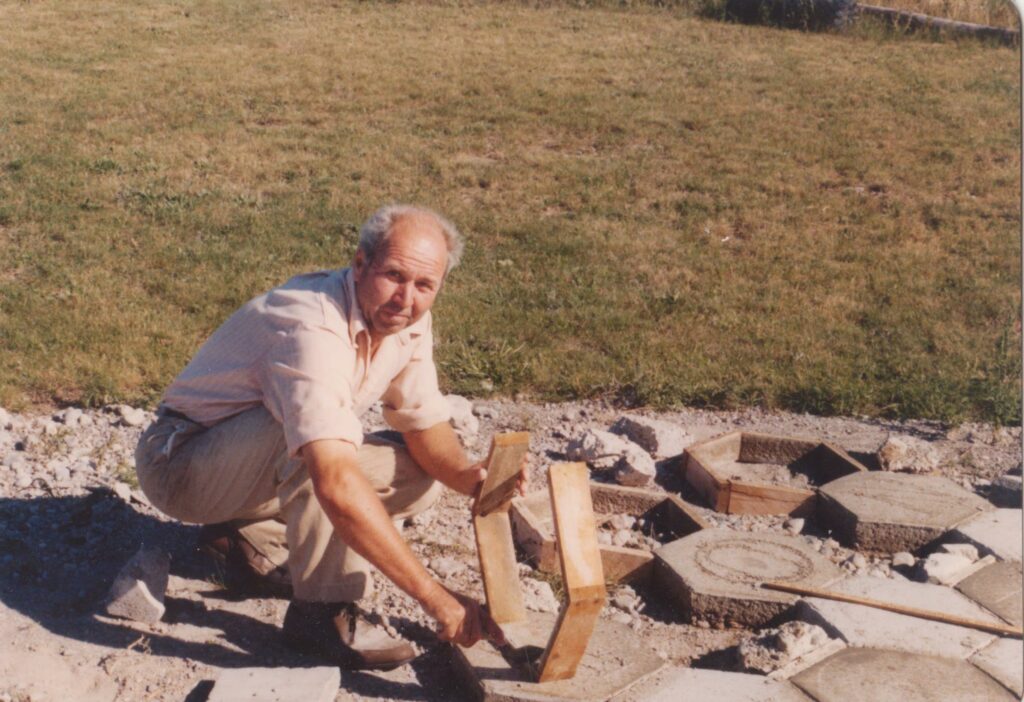
Although Ray continued to work on the property until 1983, he and his Mom moved into their Easy Street (Baltimore, Ontario) home sometime in the late 1970’s. In 1979, as a gift for having completed the building of his home, Ray rewarded himself with his first new sports car, a Toyota Celica GT hatchback.
Florie continued to live with Ray at this location until her death, sometime around 1980. Friends at the time remarked on the care that Ray took with Florie. Ray benefitted as well, and was truly fortunate to have his mother with him until he was in his early 50’s, as she provided help with some of the things that Ray was less interested in – like cleaning and cooking. They were a good team, supporting each other.
While Florie was alive, she and Ray continued to visit Jack Lake and their Island 28 cottage. As the years went by, they found that it was getting increasingly busier with more tourists. After Florie passed, a friend of Ray’s noted that Ray would only go to Island 28 for a few days at a time—usually mid-week, from Tuesday to Thursday, in order to avoid the noise and weekend partiers. Ray was still visiting his Jack Lake Island 28 property up until 1989, which is when he sold the cabin, boat-house, boats (sailing having been another of his passions), and furnishings.
During the 1970’s, mother and son enjoyed many trips together. From the pictures that he took, it looks like Florie enjoyed travelling almost as much as Ray did. They travelled many times to Florida during that decade, including in 1972, 1974 and 1975. There are also pictures of a trip they took to St. Augustine and Destin, Florida, in 1978. In 1979, they travelled to Cartagena, Columbia. Sadly, the Cartagena trip proved to be the last vacation where Florie appears in the photos.
Around 1980, with the Baltimore house completed and his Mom gone, Ray picked up the pace of travel. This was the decade in which he arranged his numerous Around the World tours:
1982: Ray travelled to South America, where he visited Machu Picchu, Peru, and went on an Amazon boat tour in Bolivia. This wide-ranging trip included stops in Florida, Haiti, and Aruba as well. During his time in Florida, he incorporated a trip to Disney World. It is from this Disney World visit that we see the first photographs that Ray took of carousel horses.
1983: Australia, New Zealand, Tahiti, Los Angeles
1984: Egypt, Israel, South Africa, Kenya, Nairobi.
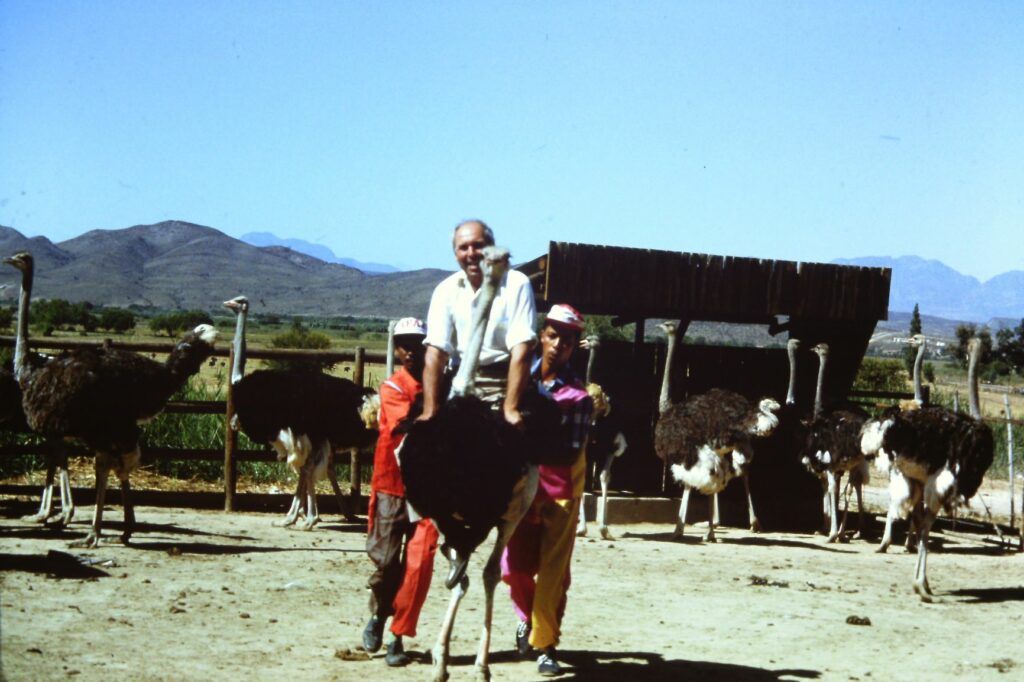
1984-1985: Around the World trip in 73 days. The trip started with a flight from Toronto to London, then went on to Belgium, Germany, Austria, Turkey, Iran, India, China, and Hong Kong back to Vancouver then to Toronto.
1987: India and Sri Lanka
1988: Tibet and Pakistan
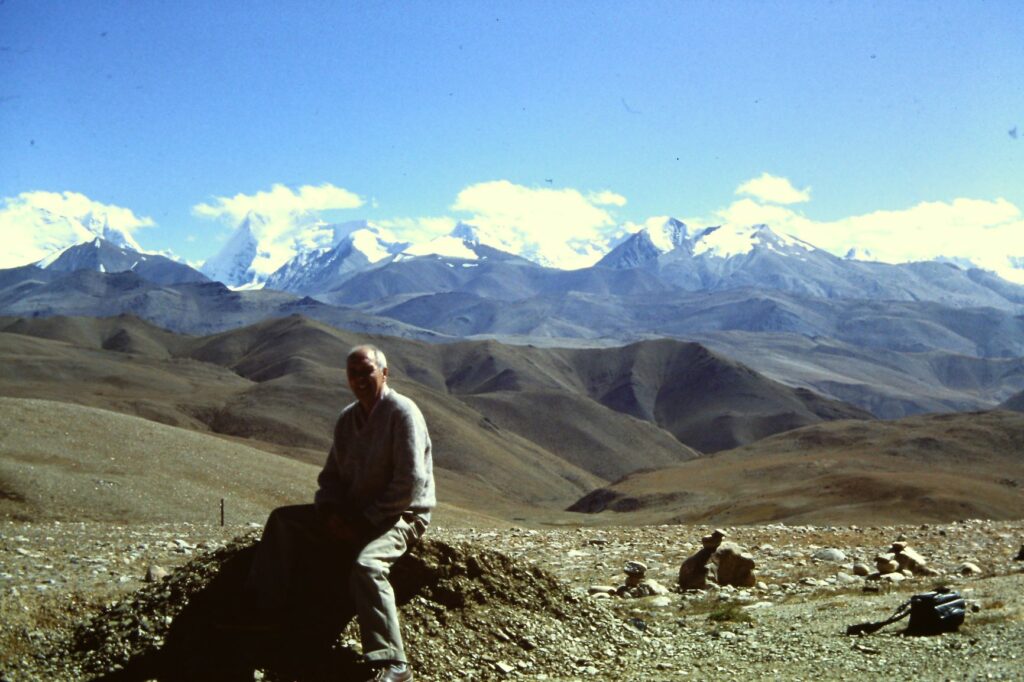
For all that Ray was a prolific traveller, he did not often write about his experiences. It appears that his photos were the primary form by which he documented his travels. That being said, when his mother was alive, he would send her postcards with tidbits about his adventures. After her death, he also would sometimes send postcards to himself, with just a few words on each, to log the day’s events. For the most part it looks like he just lived in the moment. According to his interview with Brian Young, his “aim in travelling is to see the countries and the people, not just the tourist attractions”.
Please join us next week for the conclusion to Ray’s story—Part 3: Solitary Trees Grow Strong.
We would like to thank those who were willing to share their stories of Ray with us. ~ Dave and Seely Alder.
“Imagination is more important than Knowledge. For knowledge is limited, whereas imagination embraces the entire world, stimulating progress, giving birth to evolution.”
Albert Einstein
A Tour Through the Estate (Photo credit: Len Wagg)
If you are intrigued by this story and can’t wait for Part 3, you can order a beautifully designed booklet version of the complete story of Ray’s life! Visit the Nature Shop to order your electronic copy.

